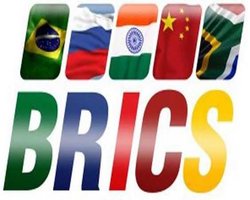Have the BRICS countries had their day? Their leaders say they should not be counted out, even though they have been negatively affected to varying degrees by the consequences of the global financial crisis and the Great Recession that followed it.
The BRICS countries – Brazil, Russia, India, China and South Africa – say their leaders at the World Economic Forum Annual Meeting 2014, will rebound during the next few years.
Some years ago, predictions abounded that by the middle of this century the BRIC nations would dominate the global economy.
A growing number of economists around the world wonder whether the BRICS countries have had their day and are making way for the MINT countries – Mexico, Indonesia, Nigeria and Turkey.
What are China’s prospects?
Liu Mingkang, Distinguished Fellow, Fung Global Institute, Hong Kong, says concerns and rumors that the Chinese economy will run out of steam are unfounded.
Although growth rates have fallen by about 30%, the country’s GDP is now growing at a more sustainable rate of six to seven percent, and will do so until the end of this decade, Mingkang says.
He added that China’s dramatic economic growth came at considerable environmental cost.
The Chinese Communist Party is now concentrating on three priorities:
- Reducing overcapacity, especially in heavy industry. Heavy industry is capital intensive but not labor intensive.
- Reducing borrowing by local governments, and increasing transparency in the markets regarding their debts.
- Stimulating domestic demand so that the country becomes less dependent on exports.
Liu Mingkang said:
“In the short term, tapering of quantitative easing will create huge volatility in capital flows. We will certainly be hit by this volatility but, hopefully, not shocked.”
Brazil “consolidating” on reforms
Brazil’s Minister of Finance, Guido Mantega, said that although the country will not return to its pre-crisis levels of economic growth, it is already consolidating the reforms introduced over the last ten years that have increased the incomes of its poorest people.
Brazil has plenty of opportunities coming up for private investment. Licenses valued at approximately $250 billion are about to go for auction. These cover highways, airports, ports, railways and other infrastructure.
Brazil had several large demonstrations throughout the country in 2013. Demonstrators from a wide range of socioeconomic levels were fed up with corruption, high taxes, and either poor quality or non-existent services.
Although public protests have died down, the Brazilian general public has yet to be convinced that the country’s reforms are real.
India – the state sector cannot be dismantled overnight
India’s Minister of Finance, Palaniappan Chidambaram, said:
“India’s growth declined because of the adverse external environment and due to some decisions we took.”
Chidambaram forecasts 6% GDP growth this year, 7% in 2015, and 8% in 2016.
When asked about the state of India’s economy, Chidambaram said:
“New space in the economy is reserved substantially for the private sector but state enterprises cannot be dismantled overnight or simply wished away.”
“As long as the public sector is competitive and run on commercial terms there is no reason to take state enterprises apart.”
South Africa’s “new normal”
South Africa has come a long way over the last twenty years. The country is now heading towards what Pravin Gordhan, South Africa’s Minister of Finance, calls “the new normal”.
Gordhan said:
“The global financial crisis, which was not of our making, did huge damage.”
“We now need to enhance the skills of our citizens and improve our infrastructure to take advantage of the opportunities ahead.”
Russia has too much red tape
Russia’s Deputy Prime Minister, Arkady Dvorkovich, says his country’s currently slow GDP growth rate is partly due to economic conditions in China and Europe, its main trading partners.
Internal constraints are the principal obstacles to progress.
Dvorkovich added:
“The business environment is not good enough. There is too much red tape and bureaucracy, and insufficient support for SMEs and other enterprises that will provide the high-tech jobs of the future.”

